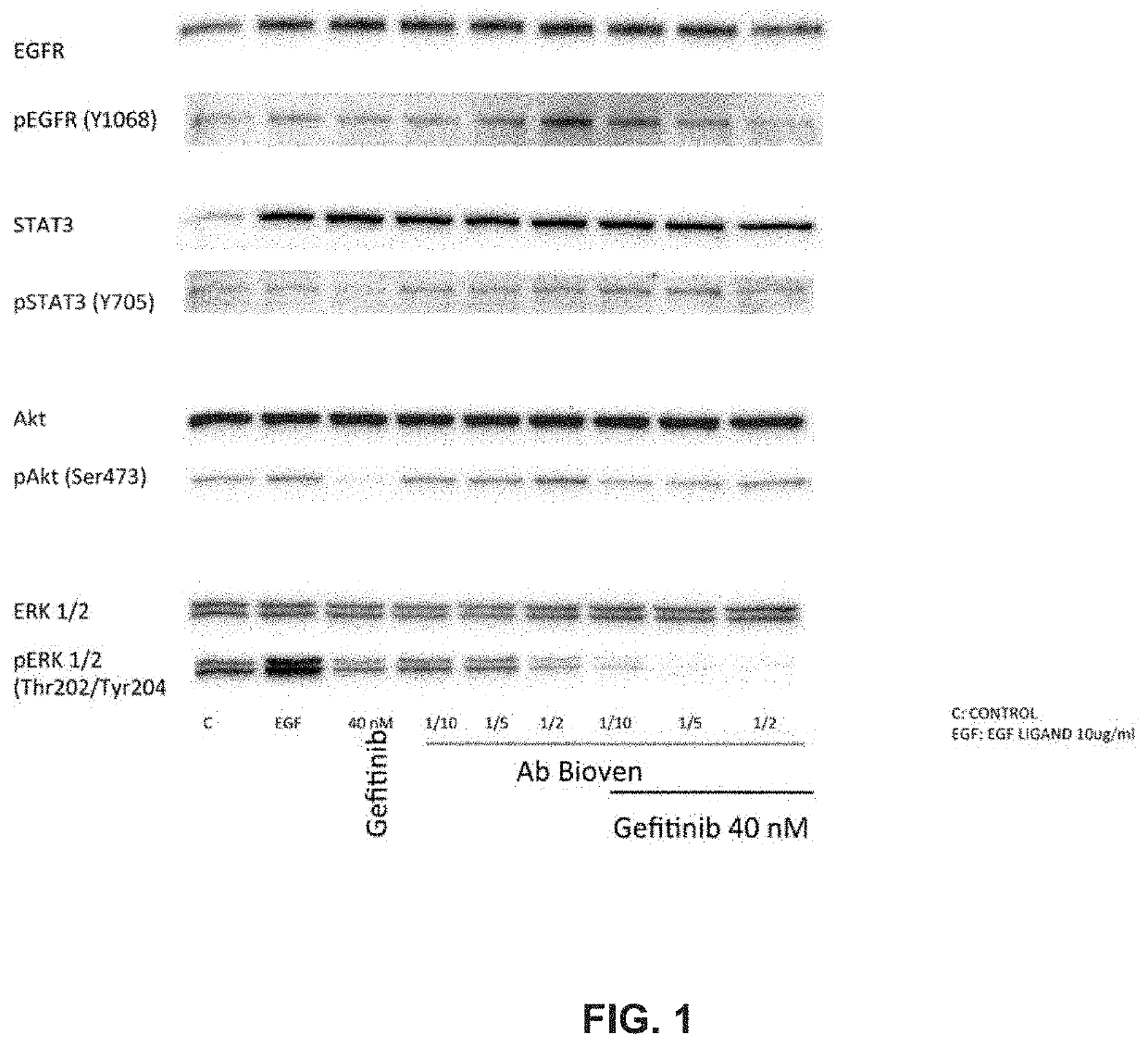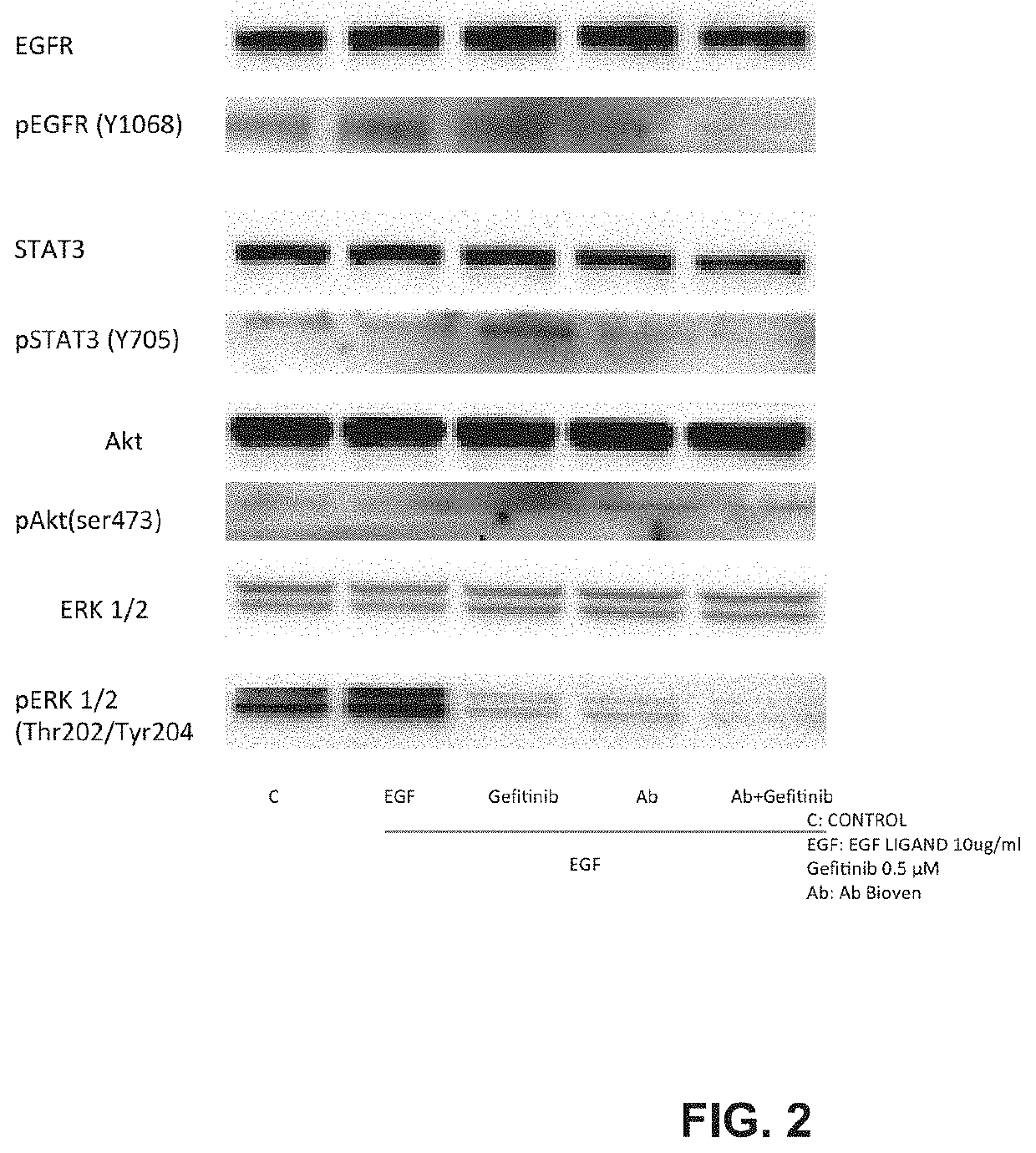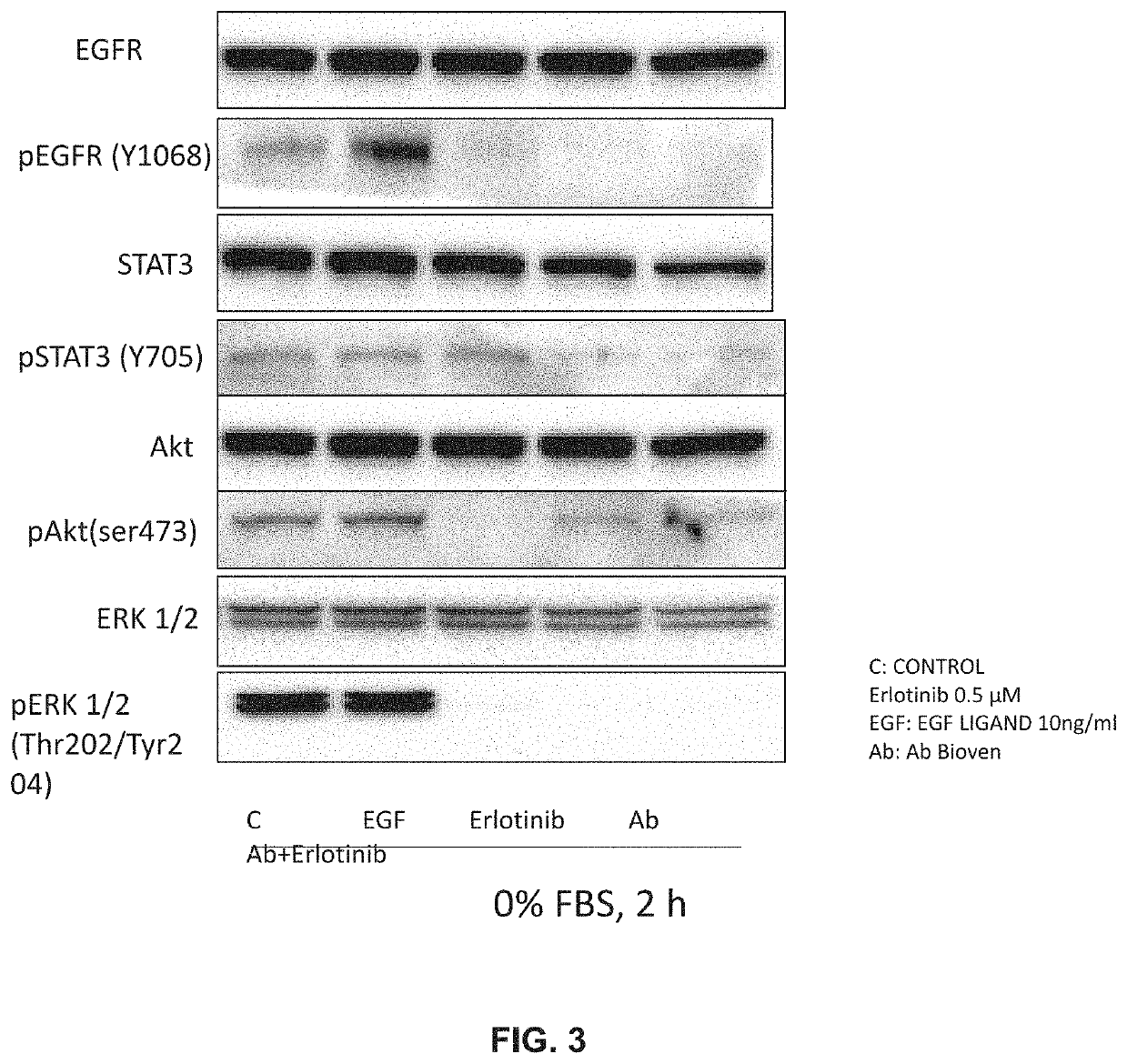Methods and compositions for inhibition of egf/egfr pathway in combination with tyrosine kinase inhibitors
a technology of tyrosine kinase inhibitor and composition, which is applied in the field of treating and preventing disease conditions, can solve the problems of poor outcome, unsatisfactory current chemotherapy, and troubling prognosis for the majority of patients diagnosed with cancer
- Summary
- Abstract
- Description
- Claims
- Application Information
AI Technical Summary
Benefits of technology
Problems solved by technology
Method used
Image
Examples
examples
[0106]This invention is further illustrated by the following examples, which should not be construed as limiting.
example i
t of Anti EGF on Inhibition of EGF / EGFR Pathway with WB as Endpoint
Objectives:
[0107]To compare, in PC9 cell line from NSCLC patients, effect of anti-EGF antibodies to Gefitinib on inhibition of the pathway activated by EGF-EGFR binding. To assess whether, in same cell line, combination of anti EGF and Gefitinib would have a synergistic effect.
Materials and Methods for Testing Activation by Western Blotting (WB) Methodology:
[0108]The PC9 cell line carries a deletion in exon 19 making this cell line sensitive to TKI's. It represents a model for the EGFR Mutated segment of the NSCLC patient cohort receiving first-line TKI treatment.
[0109]All tissue culture materials for these experiments were obtained from Biological Industries (Kibbutz Beit Haemek, Israel) or Invitrogen (Paisley, Scotland, UK). The PC9 cell line was kindly provided by F. Hoffman-La Roche Ltd (Basel, Switzerland). Cells were maintained in RPMI medium supplemented with 10% fetal bovine serum (FBS), 50 μg / mL penicillin-s...
experiment 1
[0111]In a typical standard experiment, five T-75 flasks of the cell line under study were cultured to approximately 70% confluence, washed twice with PBS and grown o / n in serum-free medium. The serum-starved cells were then washed again and treated as follows: For first experiments anti EGF dilutions ware tested at 1 to 20, 1 to 10 and one to 5 when alone or when combined with gefitinib. Gefitinib was used at concentration of about 40 nano-Molar Medium, EGF and antibody or gefitinib or both anti-EGF and gefitinib were mixed and pre-incubated at about 37° C. for about 10 min prior to addition to the cells. Treatment was for about 15 minutes.
PUM
| Property | Measurement | Unit |
|---|---|---|
| median time | aaaaa | aaaaa |
| incubation time | aaaaa | aaaaa |
| incubation time | aaaaa | aaaaa |
Abstract
Description
Claims
Application Information
 Login to View More
Login to View More - R&D
- Intellectual Property
- Life Sciences
- Materials
- Tech Scout
- Unparalleled Data Quality
- Higher Quality Content
- 60% Fewer Hallucinations
Browse by: Latest US Patents, China's latest patents, Technical Efficacy Thesaurus, Application Domain, Technology Topic, Popular Technical Reports.
© 2025 PatSnap. All rights reserved.Legal|Privacy policy|Modern Slavery Act Transparency Statement|Sitemap|About US| Contact US: help@patsnap.com



